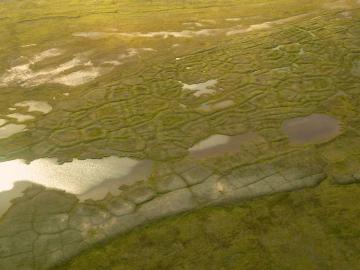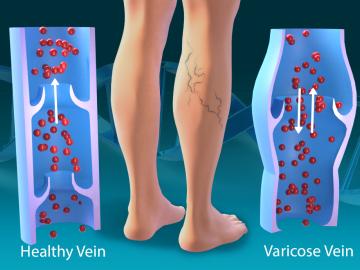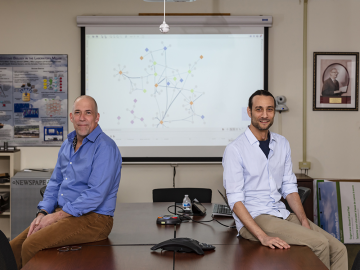
Filter News
Area of Research
- (-) Biology and Environment (50)
- (-) Supercomputing (151)
- Advanced Manufacturing (6)
- Biological Systems (1)
- Building Technologies (1)
- Computational Biology (2)
- Computational Engineering (3)
- Computer Science (16)
- Electricity and Smart Grid (1)
- Energy Science (63)
- Functional Materials for Energy (1)
- Fusion and Fission (9)
- Fusion Energy (4)
- Isotope Development and Production (1)
- Isotopes (8)
- Materials (135)
- Materials Characterization (1)
- Materials for Computing (20)
- Materials Under Extremes (1)
- Mathematics (1)
- National Security (28)
- Neutron Science (54)
- Nuclear Science and Technology (9)
- Quantum information Science (9)
- Sensors and Controls (1)
- Transportation Systems (1)
News Topics
- (-) Biomedical (28)
- (-) Computer Science (105)
- (-) Exascale Computing (28)
- (-) Materials Science (22)
- (-) Microscopy (16)
- (-) Physics (9)
- (-) Quantum Science (25)
- (-) Security (6)
- (-) Summit (47)
- 3-D Printing/Advanced Manufacturing (13)
- Advanced Reactors (2)
- Artificial Intelligence (41)
- Big Data (29)
- Bioenergy (50)
- Biology (76)
- Biotechnology (15)
- Buildings (6)
- Chemical Sciences (15)
- Clean Water (11)
- Composites (5)
- Coronavirus (22)
- Critical Materials (4)
- Cybersecurity (9)
- Energy Storage (11)
- Environment (105)
- Frontier (32)
- Fusion (2)
- Grid (7)
- High-Performance Computing (56)
- Hydropower (8)
- Isotopes (3)
- Machine Learning (20)
- Materials (24)
- Mathematics (5)
- Mercury (7)
- Molten Salt (1)
- Nanotechnology (16)
- National Security (9)
- Neutron Science (16)
- Nuclear Energy (5)
- Partnerships (6)
- Polymers (4)
- Quantum Computing (20)
- Simulation (26)
- Software (1)
- Space Exploration (3)
- Transportation (8)
Media Contacts

Scientists at ORNL have confirmed that bacteria-killing viruses called bacteriophages deploy a sneaky tactic when targeting their hosts: They use a standard genetic code when invading bacteria, then switch to an alternate code at later stages of

Environmental scientists at ORNL have recently expanded collaborations with minority-serving institutions and historically Black colleges and universities across the nation to broaden the experiences and skills of student scientists while bringing fresh insights to the national lab’s missions.

Oak Ridge National Laboratory scientists set out to address one of the biggest uncertainties about how carbon-rich permafrost will respond to gradual sinking of the land surface as temperatures rise.

A study by Oak Ridge National Laboratory researchers has demonstrated how satellites could enable more efficient, secure quantum networks.

Hydrologist Jesús “Chucho” Gomez-Velez is in the right place at the right time with the right tools and colleagues to explain how the smallest processes within river corridors can have a tremendous impact on large-scale ecosystems.

As part of a multi-institutional research project, scientists at ORNL leveraged their computational systems biology expertise and the largest, most diverse set of health data to date to explore the genetic basis of varicose veins.

Critical Materials Institute researchers at Oak Ridge National Laboratory and Arizona State University studied the mineral monazite, an important source of rare-earth elements, to enhance methods of recovering critical materials for energy, defense and manufacturing applications.

Seven scientists at the Department of Energy’s Oak Ridge National Laboratory have been named Battelle Distinguished Inventors, in recognition of their obtaining 14 or more patents during their careers at the lab.

John “Jack” Cahill is out to illuminate previously unseen processes with new technology, advancing our understanding of how chemicals interact to influence complex systems whether it’s in the human body or in the world beneath our feet.

ORNL researchers discovered genetic mutations that underlie autism using a new approach that could lead to better diagnostics and drug therapies.


